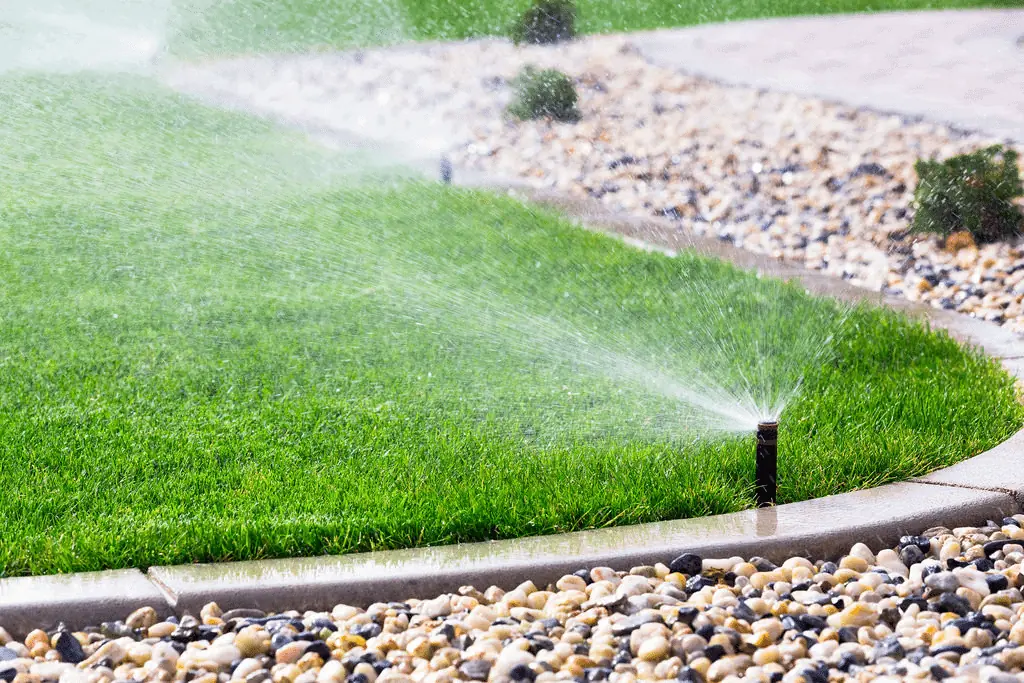It seems like spring may never arrive here in Michigan, with the late snow and ice we’ve seen recently. But if we’re allowed to be optimistic for a minute, we need to remember the upcoming spring weather and maintenance that we need to do to prepare.
One of the most common issues with spring weather is the transition back to using their sprinklers to water your lawn. Failing to do some basic preventative maintenance can be very costly and damaging to the system. Here are a few easy reminders to ensure your sprinklers are fired up and ready for whenever this cold weather decides to break.
Ensure the ground is not frozen
Even if it seems warm enough outside, the ground may still be frozen down where the water pipes are located. Starting up the system with the ground still frozen can lead to damage. Grab a shovel and dig down to see if the ground is thawed at a 12-inch depth. If it still feels solid, wait about 1 week before checking again. The ground can take a surprisingly long time to warm up.
Check the timer & control system
Run a diagnostic check of the programming. This includes wiping away dirt and cobwebs on the timer, checking the date and time in the system and reconfirming the watering settings for your lawn. If there is a backup battery, this may be a good time to replace that. Make sure there’s a copy of the watering layout and schedule nearby.
Check the heads
Rocks, dirt, leaves, and sand can collect in the heads to prevent good water flow from the sprinkler heads. Turning on the system with blocked heads may cause breakage in the lines and that’s no fun at all. Clear out any obstructions you see and make sure to check every sprinkler head.
Any damage?
Sprinklers are made to last but are exposed to a constant barrage of destruction. From dogs, lawn mowers, snow blowers, wagons, shovels, strollers, and lawn edgers – there are dozens of hazards around waiting to damage your sprinkler heads. Even chipped or loose heads can lead to leaks or uneven distribution and wreak havoc on your lawn over the course of a summer. Inspect each head closely for damage and replace any that need it.
Valves
Valves are the main regulators of the sprinkler system and ensure that the system works efficiently. They provide the correct amount of water to each area when necessary. A leaky valve is wasteful and something you won’t necessarily notice. They are usually located in a covered pit in the lawn somewhere. Pull up the cover and inspect them and make sure they are opening and closing fully and not leaking by. Swampy, overly wet areas may be caused by leaky valves that aren’t fully seating. Make sure all manual drains are closed before turning on the system.
Turn on the water slowly
Turning on the water full blast can send a rush of pressure to sensitive components that are not ready for it. When turning the main valve to the system back on, turn it slowly allowing the system to fill in a gradual manner, preventing water hammer and damaging the system.
Double check the pressure
A system with too much pressure from your municipal supply can break irrigation components. If you have one, check the water pressure at the inlet to your house by connecting a water pressure gauge. They can connect to your hose faucet and can give you a good idea of the pressure range in your area. If the pressure is above the suggested operating range (40-50 psi, please double check with your sprinkler system specifications first), you may need to invest in a pressure regulator to turn the pressure down.
As always, we are excited to help out with anything we can. If you have questions about a home improvement project or maintenance issue or you need tips on a home repair head on over to our Ask A Contractor page to get answers! Submit your question and one of our experts will give you the answers you need.

